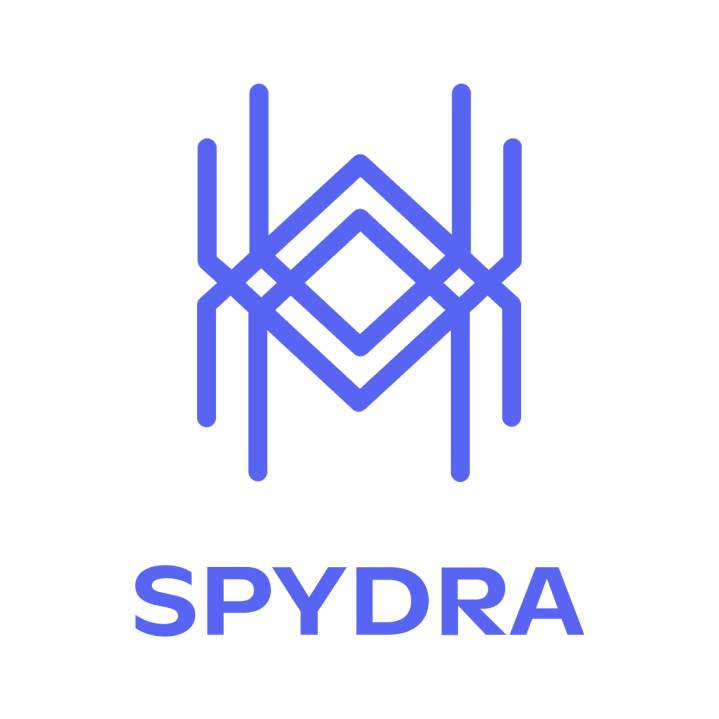What is Side Chains in Blockchain: A Comprehensive Guide to Understanding What They Are and How They Work
 Pravin
Pravin
Introduction to side chains in blockchain
When it comes to blockchain technology, the concept of side chains often comes up. But what exactly are side chains and why are they important? In this comprehensive guide, we will delve into the world of side chains and explore their inner workings. By the end, you will have a clear understanding of what side chains are, how they work, and the potential they hold in revolutionizing the blockchain landscape.
Related Article :- https://www.spydra.app/blog/what-is-a-side-chain
What are side chains and why are they important?
Side chains, as the name suggests, are parallel chains that run alongside the main blockchain. They serve as an extension of the main chain, enabling the execution of smart contracts and the transfer of assets in a more efficient and scalable manner. One of the key reasons why side chains are important is their ability to alleviate the limitations of the main blockchain, such as scalability and transaction speed. By offloading certain tasks to side chains, the main chain can focus on its core functions, resulting in a more streamlined and optimized blockchain ecosystem.
How do side chains work?
To understand how side chains work, let's consider a simple analogy. Imagine the main blockchain as a bustling highway, with numerous lanes filled with traffic. As the traffic increases, congestion becomes a problem, slowing down the flow of vehicles. Now, imagine side chains as additional roads branching off from the main highway. These side roads can handle some of the traffic, reducing congestion and allowing for smoother flow of vehicles. Similarly, side chains in blockchain allow for the execution of transactions and smart contracts outside the main chain, reducing the burden on the main network and increasing overall efficiency.
Side chains achieve this by employing a two-way pegging mechanism. This mechanism enables the transfer of assets between the main chain and the side chain. When assets are moved from the main chain to the side chain, they are locked on the main chain and a corresponding representation is created on the side chain. This representation, known as a wrapped token, can then be freely traded and utilized within the side chain. When the assets need to be moved back to the main chain, the wrapped tokens are burned, and the original assets are unlocked on the main chain. This two-way pegging ensures that the assets remain secure and synchronized between the main chain and the side chain.
Benefits and use cases of side chains
Side chains offer a multitude of benefits and can be applied to various use cases within the blockchain ecosystem. One of the primary advantages of side chains is scalability. By offloading transactions and smart contracts to side chains, the main chain can process a higher volume of transactions, resulting in improved scalability and reduced congestion. This is particularly crucial in applications that require high transaction throughput, such as decentralized exchanges, gaming platforms, and supply chain management systems.
Another significant benefit of side chains is increased privacy and confidentiality. Side chains can implement different consensus mechanisms and privacy features, allowing for the execution of private transactions and confidential contracts. This opens up possibilities for applications in industries such as healthcare, finance, and identity management, where privacy is of utmost importance.
Moreover, side chains enable interoperability between different blockchain networks. By connecting multiple side chains to a main chain, it becomes possible to transfer assets and execute smart contracts across different blockchains. This interoperability can foster collaboration and synergy between disparate blockchain projects, paving the way for a more interconnected and efficient blockchain ecosystem.
Side chain vs. main chain: What's the difference?
To understand side chains, it is essential to distinguish them from the main chain. The main chain is the primary blockchain network that serves as the foundation for all transactions and smart contracts. It is the most secure and immutable layer of the blockchain ecosystem. On the other hand, side chains are secondary chains that run parallel to the main chain. They provide additional functionality and scalability while remaining connected to the main chain through the two-way pegging mechanism.
The main chain and side chains have different characteristics and purposes. The main chain focuses on maintaining the decentralized nature of the blockchain and ensuring the security and immutability of transactions. It is responsible for reaching consensus and validating transactions on a global scale. Side chains, on the other hand, can be tailored to specific needs, allowing for faster transaction processing, privacy features, and interoperability with other blockchains. While the main chain provides the foundation, side chains extend its capabilities and offer more flexibility in executing transactions and smart contracts.
Common misconceptions about side chains
As with any emerging technology, there are several misconceptions surrounding side chains in blockchain. One common misconception is that side chains are synonymous with altcoins or independent blockchains. While side chains operate independently to some extent, they are ultimately connected to the main chain through the two-way pegging mechanism. This connection ensures that the assets and transactions on side chains remain synchronized and secure.
Another misconception is that side chains are a solution to all scalability issues in blockchain. While side chains can significantly improve scalability, they are not a one-size-fits-all solution. The effectiveness of side chains in addressing scalability depends on the specific use case and design of the blockchain project. It is crucial to carefully consider the requirements and limitations of side chains before implementing them in a blockchain project.
Implementing side chains in blockchain projects
Implementing side chains in blockchain projects requires careful planning and consideration of various factors. One of the key decisions to make is the choice of consensus mechanism for the side chain. Different consensus mechanisms offer different trade-offs in terms of security, scalability, and decentralization. It is important to choose a consensus mechanism that aligns with the specific requirements and goals of the blockchain project.
Another consideration is the interoperability between the main chain and side chains. Seamless transfer of assets and execution of smart contracts across different chains require standardized protocols and communication channels. Ensuring compatibility and interoperability between the main chain and side chains is crucial for the success of a blockchain project with side chain implementation.
Additionally, the security of side chains must be carefully addressed. Side chains introduce additional attack vectors and potential vulnerabilities. Robust security measures, such as auditing, monitoring, and encryption, should be implemented to safeguard the assets and transactions on side chains. Regular security assessments and updates are essential to maintain the integrity of the entire blockchain ecosystem.
Challenges and limitations of side chains
While side chains offer numerous benefits, they also come with their fair share of challenges and limitations. One of the main challenges is maintaining the security and integrity of the entire blockchain network. As side chains introduce additional layers and connections, the risk of security breaches and attacks increases. It is crucial to implement robust security measures and conduct regular audits to mitigate these risks.
Another challenge is achieving true decentralization in a side chain ecosystem. Side chains, by their nature, introduce a level of centralization as they rely on the main chain for security and asset synchronization. Ensuring that side chains maintain a sufficient level of decentralization while benefiting from the scalability and flexibility they provide is a delicate balance to strike.
Additionally, interoperability between different side chains and main chains can be a technical challenge. As more blockchain projects adopt side chains, the need for standardized protocols and communication channels becomes increasingly important. Achieving seamless interoperability between different chains requires collaboration and standardization efforts within the blockchain community.
Future developments and trends in side chain technology
The field of side chain technology is continuously evolving, and several exciting developments and trends are shaping its future. One such trend is the emergence of cross-chain interoperability solutions. These solutions aim to enable seamless transfer of assets and execution of smart contracts across different blockchains without the need for centralized exchanges or intermediaries. Cross-chain interoperability has the potential to unlock a new era of collaboration and synergy between blockchain projects.
Another trend is the integration of side chains with layer 2 solutions, such as state channels and plasma. Layer 2 solutions offer off-chain scalability and transaction processing, complementing the capabilities of side chains. By combining these technologies, blockchain projects can achieve even higher levels of scalability and efficiency, opening up new possibilities for decentralized applications and services.
Furthermore, advancements in privacy-preserving technologies are expected to play a significant role in the future of side chains. Innovations such as zero-knowledge proofs and secure multi-party computation can enhance the privacy and confidentiality features of side chains, enabling the execution of private transactions and contracts without compromising security.
Conclusion: Embracing the potential of side chains in blockchain
Side chains are a powerful tool that can revolutionize the blockchain landscape. By offloading transactions and smart contracts to parallel chains, side chains offer improved scalability, privacy, and interoperability. While there are challenges and limitations to overcome, the future of side-chain technology looks promising. As blockchain projects continue to innovate and explore the potential of side chains, we can expect to see a more efficient, interconnected, and secure blockchain ecosystem.
So, let's embrace the potential of side chains and unlock the full capabilities of blockchain technology. By understanding what side chains are, how they work, and the benefits they bring, we can harness their power to shape the future of decentralized applications and services.
Subscribe to my newsletter
Read articles from Pravin directly inside your inbox. Subscribe to the newsletter, and don't miss out.
Written by

Pravin
Pravin
Integrate Spydra’s easy-to-use APIs to tokenize your assets for more secure, transparent and reliable data exchange in supply chain, financing, cross-industry processes etc.